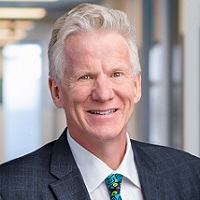 By Nick van Terheyden aka Dr Nick, Principal, ECG Management Consulting
By Nick van Terheyden aka Dr Nick, Principal, ECG Management Consulting
Twitter: @drnic1
Host of Healthcare Upside Down – #HCupsidedown
We place enormous trust in our healthcare providers. We turn to them when we’re suffering. We rely on their care and advice to keep our families safe and healthy. We expect them to address acute ailments in the immediate term and identify deeper issues before they become serious problems in the long term.
So why is it that companies like Netflix and Amazon know more about us than our healthcare providers?
While popular platforms and websites are quick to offer us recommendations based on what they know about our history and preferences, healthcare generally clings to a one-size-fits-all approach. And since reminders and alerts about managing heart conditions or diabetes are arguably more pressing than a suggestion to check out a new sci-fi series, a customized approach to care can have benefits for patients and providers.
Episode NOW on Demand
But personalization is more than just a matter of convenience. For those tasked with making important healthcare decisions for themselves and their families—the “chief health officer,” as described by Kristin Begley of Wildflower Health—increased customization could be the difference between good and bad health outcomes. “One of the biggest failures in healthcare [is] the fact that we are not personalized,” she says.
Kristin joins us this week on episode to discuss the role of the family chief health officer and how to make their job easier. Here are three takeaways from our conversation.
Who is the chief health officer, and what does she/he do?
It’s not an official title, the hours are brutal, and the pay is nonexistent. But most families have what Kristin calls a chief health officer. It’s a critical role and, as Kristin notes, one often (but not always) filled by a woman. Her company’s website indicates that 80% of healthcare decisions are made by women—and that 77% of women lack the time, knowledge, and energy to make those decisions.
“Oftentimes, people just don’t have the information they need,” she says. “They’re out there searching [online] because they don’t know who to trust. So we need to give women the tools they need, specific to themselves and their families, rather than just hoping that they find it.”
Personalized care starts with breaking down silos.
Like any chief executive, the family chief health officer values efficiency, and scouring the web for health advice is wasteful and time consuming—and can lead to the wrong answer. But silos between payers, providers, and employers inhibit the customized, one-stop-shopping experience so many of us have with companies like Amazon or Netflix. “We have to notbe so territorial about our silos if we expect patients to have good outcomes,” Kristin explains.
“The point is to enable technology to make the chief health officer’s life easier,” she says. “Nobody wants 20 different apps on their phone trying to manage healthcare—an app for co-pays, an app for scheduling an appointment. When you take payer and provider and employer and put it all in one place, one application” that personalized experience can become a reality.
Such personalization not only makes the process of navigating healthcare easier, but gives users access to more relevant and useful information. “Personally, I don’t want to be flooded with information around diabetes, because it’s not relevant to me,” she says. “You want technology to see [users] look at depression articles and say, ‘touch here if you need help.’ It’s all about engaging the audience and giving them the call to action that they need at the right time,” she explains.
What about those who don’t have reliable access to technology?
The idea of having the same ease of use with our healthcare as we do with online shopping entertainment is tantalizing, and as Kristin describes it, entirely feasible. Her company, Wildflower Health, is focused on empowering the family chief health officer through digital tools and personalized healthcare experiences. But not everyone has the latest smartphone or reliable internet access—raising the specter of technology becoming a barrier that further separates the underserved from care.
Kristin acknowledges the challenges, but says her company is finding ways to make its solutions accessible to underserved populations. “One of our first clients was a Medicaid client,” she recalls, “so we learned early how to optimize technology” to work on older or lower-grade phones. She adds that “the phone in the Medicaid population is the best way to get ahold of a mom; it is the most stable of their devices and living circumstances.”
Of course, even the most optimized digital tools won’t work for everyone. Kristin explains that Wildflower introduced a familiar human element to their platform—an “advocate” whom chief health officers can call if they are unable or unwilling to engage virtually. “Some people like to chat, some people like to text, some people will only talk. You have to engage people in the way that they like to be engaged.”
About the Show
The US spends more on healthcare per capita than any other country on the planet. So why don’t we have superior outcomes? Why haven’t the principles of capitalism prevailed? And why do American consumers have so much trouble accessing and paying for healthcare? Dive into these and other issues on Healthcare Upside/Down with ECG principal Dr. Nick van Terheyden and guest panelists as they discuss the upsides and downsides of healthcare in the US, and how to make the system work for everyone.
This article was originally published on the ECG Management Consulting blog and is republished here with permission.
